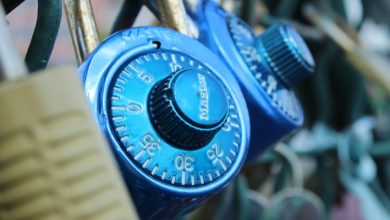What is Two-Factor Authentication (2FA)? Why It’s Essential

- Understanding Two-Factor Authentication
- The Importance of Two-Factor Authentication
- How Two-Factor Authentication Works
- Benefits of Using Two-Factor Authentication
- Common Types of Two-Factor Authentication
- Tips for Implementing Two-Factor Authentication
Understanding Two-Factor Authentication
Understanding Two-Factor Authentication (2FA) is crucial in today’s digital age where cyber threats are rampant. 2FA adds an extra layer of security to your online accounts by requiring not only a password but also a second piece of information to verify your identity. This additional step makes it significantly harder for hackers to gain unauthorized access to your sensitive data.
There are several types of 2FA methods available, including SMS codes, authenticator apps, biometric verification, and hardware tokens. Each method has its own strengths and weaknesses, so it’s essential to choose the one that best fits your needs and preferences. Implementing 2FA can help protect your accounts from unauthorized access, phishing attacks, and identity theft.
When setting up 2FA, you will typically be prompted to enter your password followed by a verification code from your chosen method. This code is usually time-sensitive and changes regularly for added security. By enabling 2FA on your accounts, you are taking proactive steps to safeguard your personal information and prevent unauthorized access.
The Importance of Two-Factor Authentication
Implementing Two-Factor Authentication (2FA) is crucial for enhancing the security of your online accounts. This additional layer of protection requires users to provide two different forms of identification before gaining access to their accounts. By combining something you know, like a password, with something you have, like a smartphone or security key, 2FA significantly reduces the risk of unauthorized access.
Two-factor authentication is essential in today’s digital landscape where cyber threats are constantly evolving. Passwords alone are no longer enough to safeguard sensitive information from hackers and cybercriminals. With the rise of phishing scams and data breaches, having an extra layer of security like 2FA can prevent unauthorized access even if your password is compromised.
By using two-factor authentication, you can protect your personal and financial data from falling into the wrong hands. Whether it’s logging into your email, accessing online banking services, or using social media platforms, 2FA adds an extra barrier that makes it much harder for cyber attackers to breach your accounts. This simple yet effective security measure can save you from the potential consequences of identity theft and financial loss.
How Two-Factor Authentication Works
Two-factor authentication (2FA) adds an extra layer of security to your online accounts by requiring two forms of verification before granting access. This typically involves something you know (like a password) and something you have (like a code sent to your phone).
When you enable 2FA, you will first enter your password as usual. Then, you will be prompted to enter a unique code that is sent to your registered device. This code is usually valid for a short period of time, adding an additional level of security to your account.
By requiring two different types of information for login, 2FA makes it much harder for unauthorized users to gain access to your accounts. Even if someone manages to obtain your password, they would still need the second form of verification to log in successfully.
Overall, two-factor authentication is an essential security measure that helps protect your online accounts from unauthorized access and potential data breaches. It is highly recommended to enable 2FA wherever possible to enhance the security of your online presence.
Benefits of Using Two-Factor Authentication
Implementing two-factor authentication (2FA) offers several benefits that enhance the security of your online accounts. By requiring a second form of verification in addition to your password, 2FA adds an extra layer of protection against unauthorized access. This significantly reduces the risk of unauthorized users gaining access to your sensitive information.
Two-factor authentication is especially crucial for safeguarding your accounts from various cyber threats, such as phishing attacks and credential stuffing. With 2FA enabled, even if malicious actors manage to obtain your password through these means, they would still need the second factor (such as a code sent to your phone) to successfully log in to your account.
Furthermore, using 2FA can also help prevent identity theft and data breaches. Since most cybercriminals rely on stolen credentials to gain access to accounts, having an extra layer of security like 2FA can be a game-changer in protecting your personal and sensitive information.
Overall, the benefits of using two-factor authentication are clear – it provides an added level of security that significantly reduces the risk of unauthorized access to your online accounts. By taking this simple yet effective security measure, you can better protect yourself from potential cyber threats and ensure the safety of your valuable data.
Common Types of Two-Factor Authentication
There are several common types of two-factor authentication methods that are widely used to enhance security measures. One popular method is SMS authentication, where a one-time code is sent to the user’s mobile phone via text message. Another common method is email authentication, where a unique code is sent to the user’s email address. Additionally, there is biometric authentication, which uses unique physical traits such as fingerprints or facial recognition to verify a user’s identity.
Another type of two-factor authentication is app-based authentication, where a user must approve a login request through a mobile app. Hardware tokens are also used for authentication, which are physical devices that generate one-time codes for users to input during login. Lastly, there is phone call authentication, where a user receives a phone call with a verification code that must be entered to access an account.
Each of these methods adds an extra layer of security to the login process, making it more difficult for unauthorized users to access sensitive information. By implementing two-factor authentication, businesses and individuals can significantly reduce the risk of data breaches and cyber attacks.
Tips for Implementing Two-Factor Authentication
Implementing Two-Factor Authentication can greatly enhance the security of your online accounts. Here are some tips to help you successfully set up and use 2FA:
- Choose a reliable 2FA provider that offers multiple authentication methods, such as SMS codes, authenticator apps, or security keys.
- Enable 2FA on all your important accounts, including email, social media, and financial platforms. This will add an extra layer of security.
- Regularly review the devices and applications connected to your accounts. Remove any that you no longer use or trust.
- Keep your authentication methods up to date. Replace SMS codes with authenticator apps or security keys for better security.
- Educate yourself and your team on the importance of 2FA and how to use it properly. This will help prevent security breaches.
By following these tips, you can make sure that your accounts are well-protected with Two-Factor Authentication. Stay safe online!



